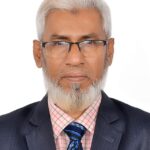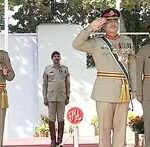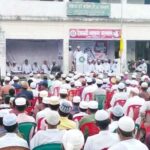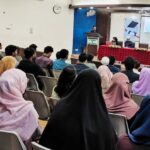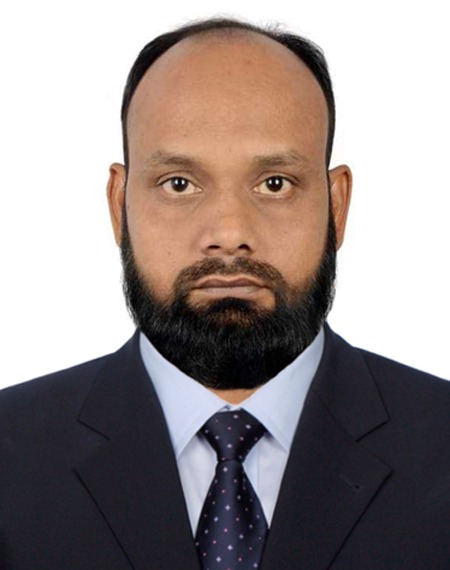
Khwaja Masum Bellah Kausarey: In recent days, Bangladesh’s national budget has become a hot topic across the country. From Parliament to the media, TV talk shows to social media, and even in tea stall conversations—everyone is talking about the budget. Economists, businesspeople, teachers, young entrepreneurs, and job-seeking youth are actively analyzing it. Central to these discussions are inflation, employment, healthcare allocation, tax structure, and social security. But a pressing question lingers—is this budget truly humane? Has it reflected the voices of all people? find the answer, we must look back at the history of Bangladesh’s budgets—where on one hand, there is a picture of economic growth, and on the other, a long-standing neglect of human-centered sectors.
Fiscal Year Budget Amount (BDT) Focus: 1972–73 786 crore Emphasis on rehabilitation and relief 1989–90 12,703 crore Priority on industrialization; healthcare neglected 2009–10 113,819 crore Mega projects; health sector below 1% of GDP 2024–25 797,000 crore Deficit: 2.26 lakh crore; social safety allocation <3%; health: only 5.4% of total budget (2023–24); social security: just 2.65% of GDP (WB Report 2024); unemployed youth: 3.9 million (ILO 2023); child mortality: 27 per 1,000 (UNICEF 2023); climate migrants: avg. 700,000–800,000 annually (IOM)
The history of Bangladesh’s budgets is not just a document of economic plans—it is a reflection of the nation’s dreams, crises, and the state’s philosophy. In the 54 years since independence, the size of the budget has grown from a few crore to nearly 8 lakh crore taka. But the question remains: how much space has been allocated to ordinary people, marginalized communities, healthcare, education, social safety, and human welfare in this budgetary journey?
While we have advanced in growth and infrastructure, we have lagged behind in humane perspectives and social inclusion. This article revisits the history of Bangladesh’s budgets to uncover the persistent absence of humanity.
The Decade of War and Reconstruction (1971–1980): Human Development Beyond Relief?
In 1971, the Mujibnagar Government’s wartime budget was only BDT 8.62 crore. Subsequent budgets primarily focused on relief, rehabilitation, and rebuilding infrastructure. The 1972–73 budget, though relatively large at BDT 786 crore, was mostly spent on administrative reconstruction.
Humanitarian gap: At this time, there were almost no concrete social commitments to health, education, or nutrition. A structured social safety framework for war victims, widows, orphans, and the displaced was never built.
Priority on Infrastructure and Industrialization (1980–1990):Infrastructure Over People?
The budget grew to BDT 4,108 crore in 1980–81 and reached BDT 12,703 crore in 1989–90. The focus was on electricity, roads, industrialization, and large-scale development projects.
Humanitarian gap: Allocations to health and education remained minimal. Instead of improving medical infrastructure, the government concentrated on sewing machine distribution and superficial public health campaigns. Maternal mortality rates did not drop, and child mortality remained frighteningly high—over 90 per 1,000 births.
Revenue and Loan-Based Budget (1990–2000): Quantitative Growth Without Vision
By 1994–95, the national budget rose to BDT 20,948 crore. To boost revenue, the government emphasized tax collection. However, the people saw little direct benefit. Reliance on domestic loans, banking sectors, and savings bonds increased.
Humanitarian gap: The Department of Social Services received a meager budget. Despite initiating mega projects, there were no concrete steps to ensure employment for educated youth or rural healthcare. Urban slums, hijra (third gender) communities, Dalits, and people with disabilities were left without targeted allocations.
The First ‘Mega’ Budget Era (2009–2010): Growth-Focused, People-Ignored
The 2009–10 budget surpassed BDT 1 lakh crore for the first time. Growth and foreign investment were the government’s main mantras.
Humanitarian gap: While Bangladesh entered the global economy through exports and overseas labor markets, public services—especially the quality of government hospitals, schools, and livelihoods of the underprivileged—remained stagnant. The health budget hovered below 1% of GDP for the entire decade.
The Recent Years (2010–2025): Mega Budgets, But Who Truly Benefits?
The 2024–25 budget is BDT 797,000 crore, with a deficit of BDT 226,000 crore. The revenue target is BDT 541,000 crore. The deficit trend is set to continue in the 2025–26 budget as well.
Humanitarian gap: Despite this massive budget, 70% of medicines in government hospitals still need to be bought by the patients themselves. More than 3.9 million youth remain unemployed, yet there are minimal dedicated funds for skill-building or employment generation. Each year, 700,000–800,000 people are displaced due to climate change, but there is no budgetary allocation for their rehabilitation.
How Can the Budget Be Made Truly Humane?
Allocate at least 3% of GDP to the health sector. Reserve 20% of the budget for education. Ensure special allocation for students with special needs. Dedicate 15% of the budget to social welfare and social safety nets—this must include the hijra community, Dalits, elderly, persons with disabilities, and marginalized groups. Create a specialized fund for the rehabilitation of climate migrants.
Launch city- and village-based “Job Bank” initiatives for employment generation.
The history of Bangladesh’s budget teaches us: growth in numbers does not equate to real development—unless rights, security, health, education, and dignity of the people are ensured. Though the budget has grown in size, the humanitarian outlook remains underdeveloped. True development will only be achieved when, alongside mega projects, the “human being” becomes central to the budget.
Author: The Executive Director of a Nongovernment Research & Development Organization, Journalist, and Human Rights Activist in Bangladesh.

